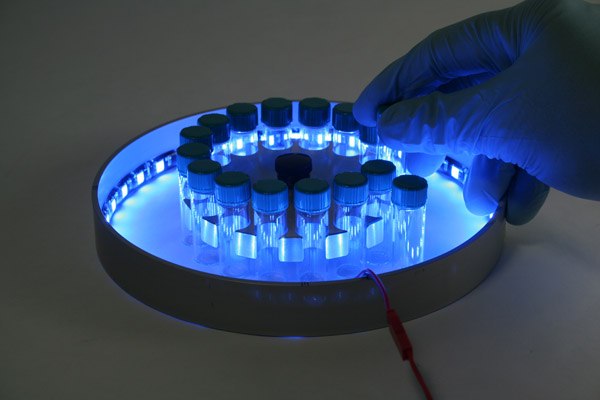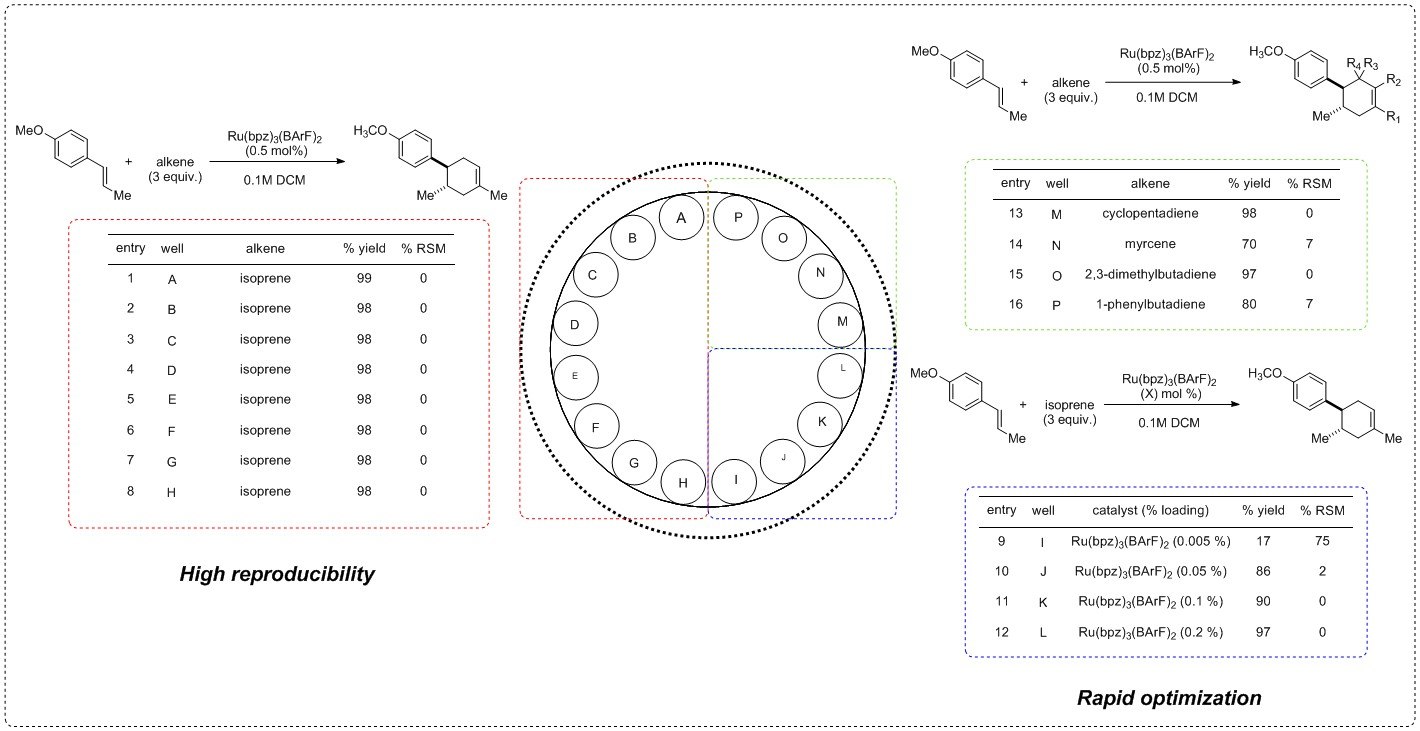Introduction
Synthetic chemists’ interest in photocatalysis has grown dramatically over the last decade, with an increasing number of leading research groups contributing innovative new methods and applications for utilizing visible light in organic synthesis. This recent burst of renewed activity in synthetic photochemistry has been motivated both by the intriguing new bond constructions that are uniquely accessible using photocatalysis as well as by the lower cost and ease of operation of visible light sources compared to conventional UV photoreactors.
On the other hand, strategies for investigating photochemical transformations in parallel have not been readily accessible to many labs due to the difficulty in maintaining homogenous irradiation in a multiwell reactor setup. In collaboration with Tehshik Yoon’s research group, we are proud to offer our Micro Photochemical Reactor (ALDKIT001) with blue LED lights.
This product seeks to address this bottleneck by providing a simple and efficient platform for probe-scale screening and optimization efforts. The 16-well sample holder has been engineered to provide uniform light penetration into each vessel and comes standard with LED strips tuned to the absorption maxima of many of the most common photocatalysts.

Figure 1.Photochemical Reactor
Advantages
- Uniform irradiation across all 16 wells provides high reproducibility and prevents screening artifacts from heterogeneous photon density
- 16-well sample base allows for efficient probe-scale screening
- LED strips tuned to common absorption maxima for photocatalysis
Representative Applications

Figure 2.Yoon photoreactor
Special thanks to Professor Yoon for contributing to this Technical Spotlight.
Materials
References
To continue reading please sign in or create an account.
Don't Have An Account?